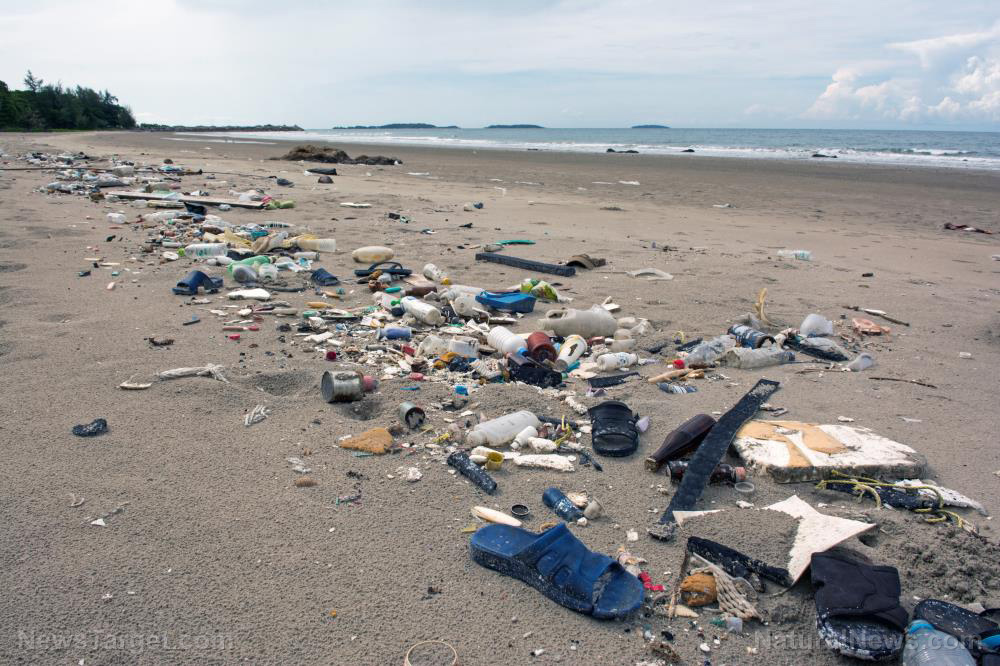Drinkers, beware: Research finds that enameled decorations on alcoholic beverage bottles may contain high levels of TOXIC elements
03/01/2020 / By Ralph Flores

The fancy bottles that come with your drink could be killing you faster than the alcohol itself. A recent paper published in Environmental Science & Technology revealed that decorated bottles of beer, wine and spirits could be laced with potentially toxic elements such as lead and cadmium. The study, authored by Andrew Turner from the University of Plymouth, examined enameled decorations and glass from various clear and colored bottles sold in liquor shops — and even supermarkets — and found that these contained traces of cadmium, lead and chromium.
While the concentrations of the elements that were present in the glass were of “low significance,” those in the enamels reached levels of greater concern. The decorated regions on spirits, beer and wine bottles contained cadmium concentrations of up to 200,000 parts per million (ppm). They also noted that certain wine bottle decors contained lead concentrations reaching 80,000 ppm. To note, the Food and Drug Administration caps the limit of cadmium in bottled water at 0.005 ppm, and the limit for lead in consumer paints is just 90 ppm.
What’s worse is that these toxic elements can wreak havoc even after they’re disposed, as these can potentially leach from the glass fragments and into the environment. A test that mimicked raining in a landfill site revealed that several fragments went beyond the levels stated in the Model Toxics in Packaging Legislation, which potentially classifies them as “hazardous.”
“This is just another example of that, and further evidence of harmful elements being unnecessarily used where there are alternatives available,” explains Turner, a professor in aquatic geometry and pollution science at the university. “The added potential for these substances to leach into other items during the waste and recycling process is an obvious and additional cause for concern.”
In his earlier work, Turner was able to show how everyday items, from second-hand toys and drinking glasses to playground equipment, contain levels of toxic substances that are harmful to human health.
“It has always been a surprise to see such high levels of toxic elements in the products we use on a daily basis,” he adds. (Related: Lead and cadmium can contaminate your beverages from microwave-heated ceramic cups, reveals study.)
Toxins right at your fingertips
For his study, Turner purchased bottles of beer, wine and spirits from retail stores over a one-year period. The bottles, which ranged from 50 milliliters to 750 mL, were either clear, frosted, green, ultraviolet-absorbing green (UVAG) or brown, and some bottles were decorated with images, patterns, logos, text or barcodes in varying colors. He collected nearly 90 bottles for the study, testing each for toxic elements, and found that 76 bottles — that’s around 85 percent — tested positive for low-level lead. Over half of the bottles, meanwhile, contained cadmium. They also found that all green and UVAG bottles, as well as 40 percent of brown glass bottles, contained chromium. Out of the 24 decorated bottles, half contained either or both lead and cadmium.
According to Turner, governments around the world should have clear laws in place “to restrict the use of harmful substances on everyday consumer products.” However, as he traced the suppliers of the bottles, he found that many of them were either imported or made in a different country from the beverage.
“This poses obvious challenges for the glass industry and for glass recycling and is perhaps something that needs to be factored [into] future legislation covering this area.”
Learn more about the damaging effects of toxic metals at HeavyMetals.news.
Sources include:
Tagged Under: Alcohol, beer bottles, beverages, bottles, cadmium, chemicals, Lead, Toxin exposure, toxins
RECENT NEWS & ARTICLES
Chemicals.News is a fact-based public education website published by Chemicals News Features, LLC.
All content copyright © 2018 by Chemicals News Features, LLC.
Contact Us with Tips or Corrections
All trademarks, registered trademarks and servicemarks mentioned on this site are the property of their respective owners.



















